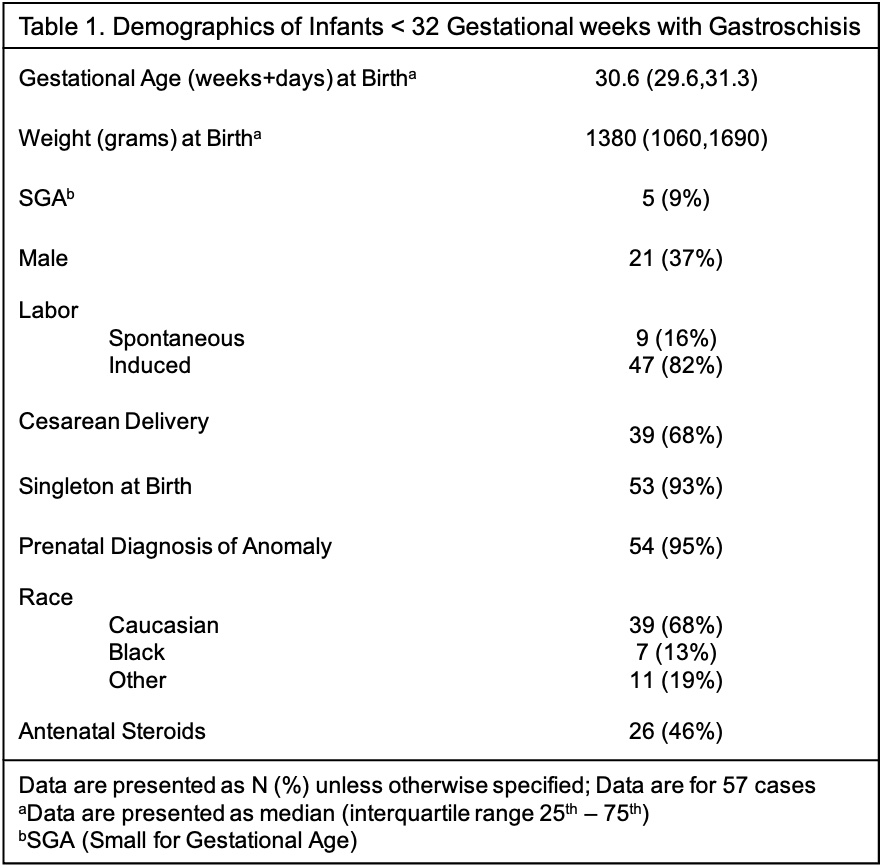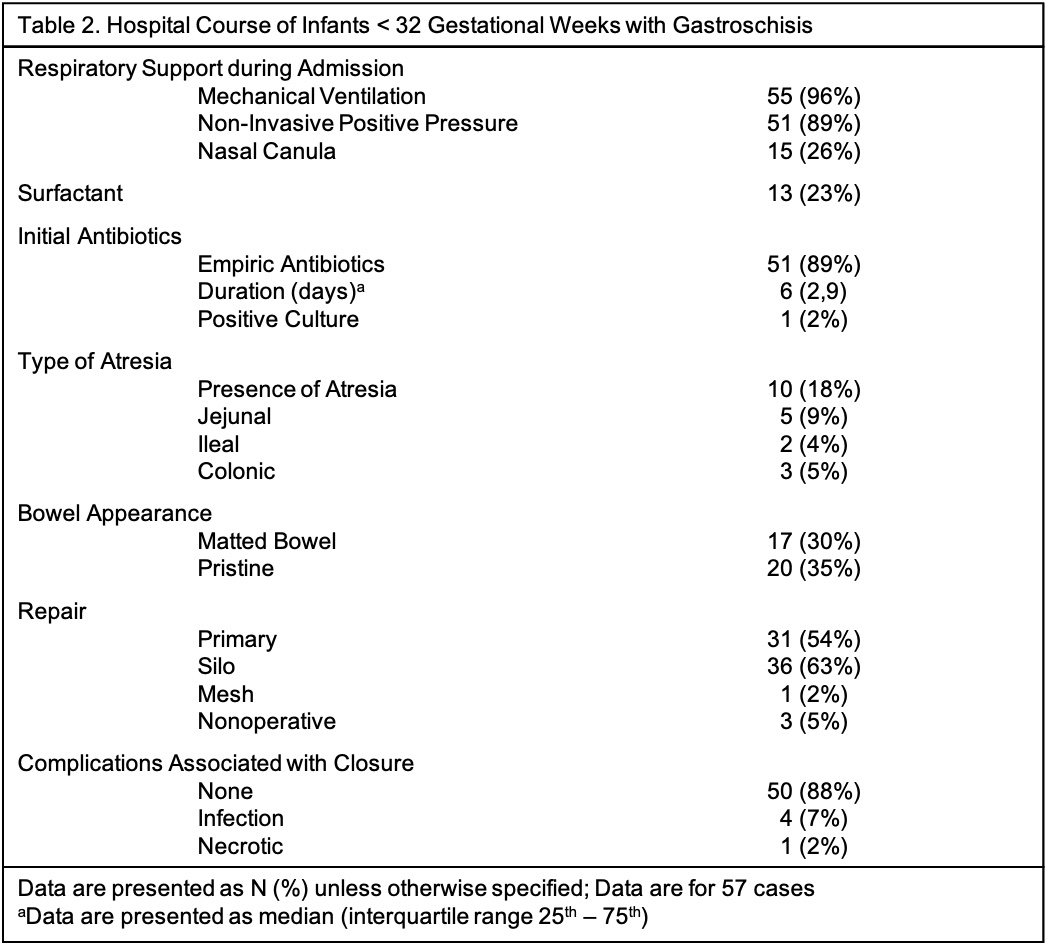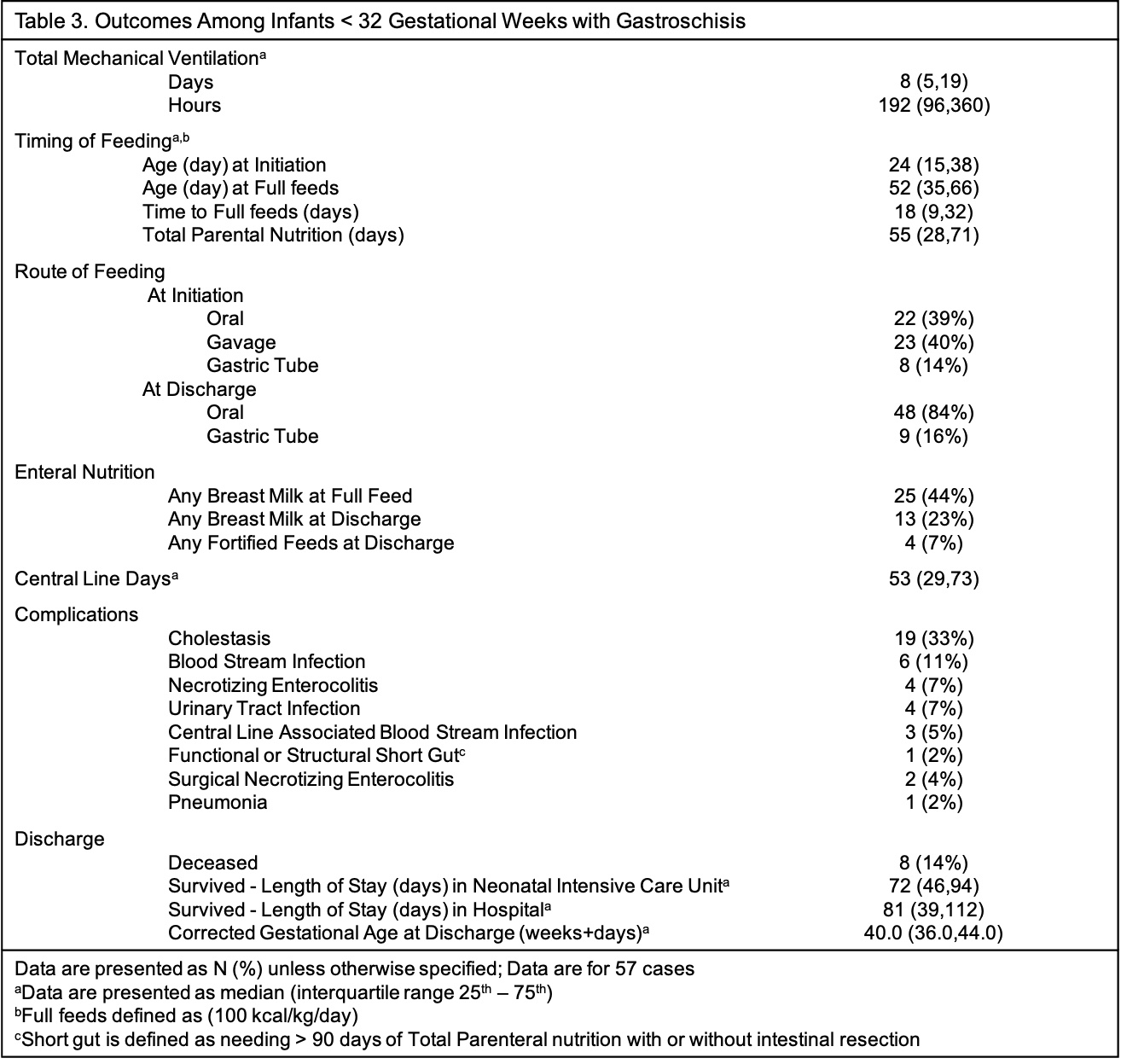Neonatal GI Physiology & NEC
Neonatal GI Physiology & NEC 3: Gut Health Clinical Research
74 - Gastroschisis Outcomes in Infants Born Prior to 32 Weeks Gestation: Examining a Multi-Institutional Cohort
Publication Number: 74.235

Charles P. Pugh, MD
Neonatology Fellow
Arkansas Children's Hospital
Little Rock, Arkansas, United States
Presenting Author(s)
Background:
Most of the literature has focused on gastroschisis outcomes for infants > 34 weeks gestational age, and limited data are available about infants with gastroschisis born at earlier gestational ages.
Objective:
To examine the outcomes of a cohort of infants born prior to 32 weeks gestation with gastroschisis using multi-institutional data.
Design/Methods:
We conducted a multi-center retrospective cohort study of infants with gastroschisis born before 32 weeks gestation in the Children’s Hospital Neonatal Consortium (CHNC) from 2010-2016. We examined demographic characteristics, neonatal interventions and NICU discharge outcomes in the cohort.
Results:
From 2010-2016, 57 infants with gastroschisis were admitted prior to 32 weeks gestation. 95% had a prenatal diagnosis of anomaly. Median gestational age was 30 weeks 6 days IQR (29.6 - 31.3) and median weight was 1380 grams (IQR 1060 – 1690) (table 1).18% of infants had associated intestinal atresia. 63% of infants were female, 9% were small-for-gestational-age and 68% were delivered via C-section. In the NICU, almost all infants received mechanical ventilation for a median 8 days (IQR 5-19 days) (table 2). Silo repair was the most common closure technique in 63% of infants. Gastroschisis closures overall had low complication rates with 88% having no complications. Time to initiate feeds was 24 days (IQR 15-38 days) and full enteral feeds were reached by 52 days (IQR 35-66 days) (table 3). Prolonged total parental nutrition was required with a median of 55 days (IQR 18 - 71). 7% of infants were diagnosed with medical necrotizing enterocolitis, 2% with surgical necrotizing enterocolitis, 10% with a blood stream infection, 33% with cholestasis, and 4% with short gut syndrome. Overall mortality in infants < 32 weeks with gastroschisis was 14% and the median length of stay among survivors was 72 days (IQR 46-94 days). 20% of infants were discharged home with tube feedings, and 30% of infants received some maternal human milk at the time of discharge.
Conclusion(s):
Infants born with gastroschisis prior to 32 weeks gestation have higher NICU mortality compared to published reports of infants born at similar gestation without anomalies. Although NICU complications are generally low, interventions that target more standardized NICU protocols may be beneficial in improving outcomes. Future studies with larger numbers of patients comparing preterm infants with gastroschisis to matched controls without gastroschisis will better help us understand gastroschisis-specific risks of comorbidities.


